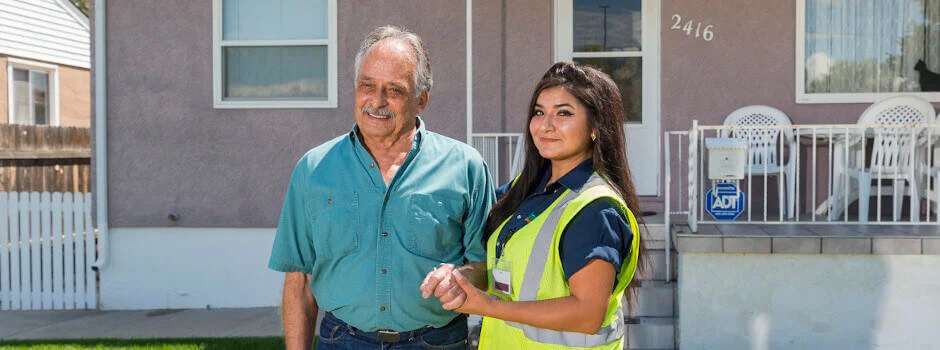It can happen in a flash – a trip on a rug or a slip on a wet floor. For older adults, a fall can lead to serious medical complications, and even death. Each year,
3 million older people are treated in emergency rooms for fall injuries, and one out of five falls causes a serious injury such as a broken bone or head injury.
Age-related changes can make older adults much more susceptible to injuries after a fall. “These changes can include reduced bone density, impaired reaction times, balance and walking impairments, and decreased muscle mass,” explains Anthony Nappi, physical therapist at InnovAge’s
Blue Ridge PACE center in Charlottesville, Virgina.
Anthony shares some things to do to lessen the risk of falls in the home:
- Safety-proof the bedroom. “InnovAge participants fall most frequently in the bedroom,” says Anthony. When seated at the bed, knees should be bent 90 degrees with both feet flat on the floor. Attach a bed cane to the bed help with sitting and standing. Keep a walker near the bed.
- Remove clutter. Clutter on stairs, steps, or the floor, is a fall waiting to happen. Pick up and remove shoes, books, papers, and any cords or wires that could be tripped over. Be sure there are clear pathways in and out of rooms and move or remove furniture if needed. Similarly, consider removing all throw rugs.
- Add grab bars and railings. Help prevent bathroom falls by adding grab bars in and around the tub or shower and by the toilet. If the home has stairways or steps, add railings on both sides.
- Update lighting. Check all lightbulbs throughout the home; swap the bulbs out for brighter ones. Consider adding nightlights in the bedroom, bathroom, and by any steps or stairs. In the bedroom, be sure lighting is easy to reach from the bed.
- Check your shoes. Ill-fitting shoes can cause trips and falls. Also, our feet can get longer and wider with age. This means the size your loved one wore 15 years ago may not be the correct size today. Shoes should fit comfortably, while firmly securing the foot. They should be easy to adjust, put on, and take off.
In-home assessments are done for each senior when they enroll in the Program of All-inclusive Care for the Elderly, or PACE. “The assessment is completed by a rehabilitative therapist, either a physical or occupational therapist,” says Anthony. “This is crucial to identify safety and fall prevention opportunities as well as modifications that enable improvements in mobility and access.”
